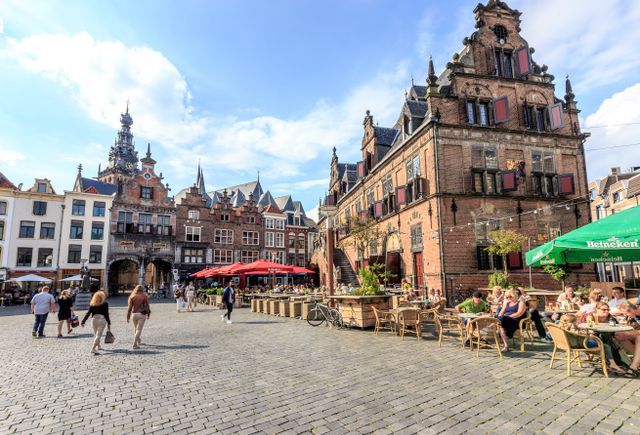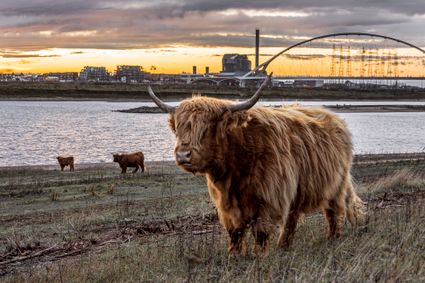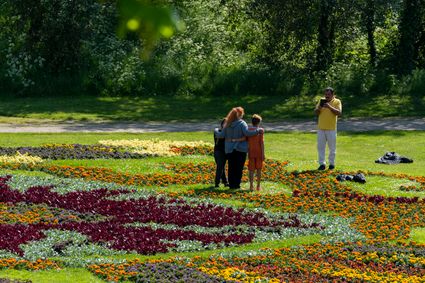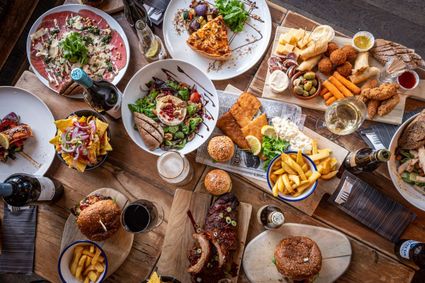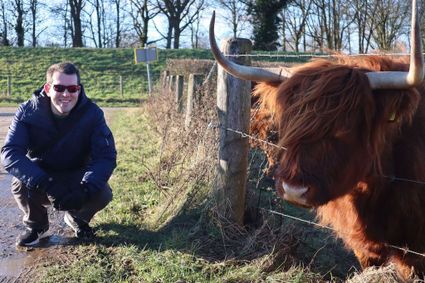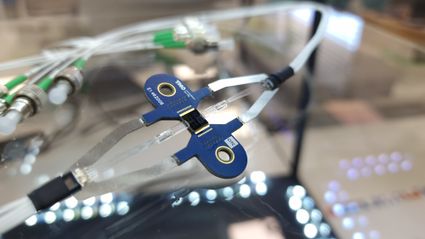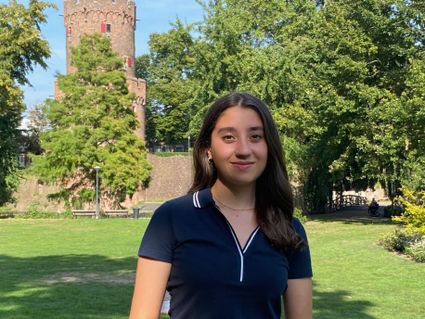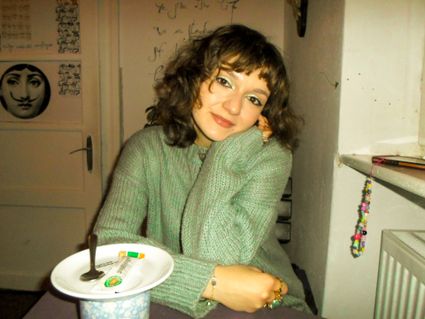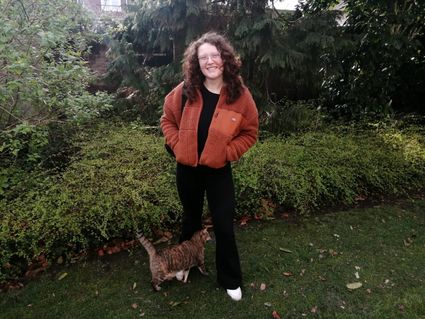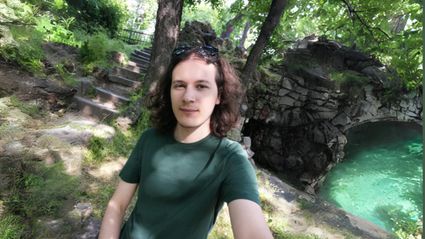
10x monuments in Nijmegen
There are a lot of monuments from a lot of different time periods in the old city of Nijmegen. To preserve the identity of the city, these monuments are nationally protected. Take a stroll through Nijmegen and you’ll be amazed at all the monuments you can find. These aren’t just statues, but also bridges, parks, and buildings! Discover Nijmegen’s protected monuments here.
1. Kronenburgerpark
Kronenburgerpark is a protected monument and a beautiful park that’s certainly worth a stroll. Part of the city wall has been preserved here, including the Kronenburger tower, a stone lion, and the large bulwark. Did you know that this statue of a lion, also known as Leeuw’s lion (leeuw being Dutch for lion), dates from 1886? The lion, over two metres high, was made by father and son duo Henri Leeuw sr. and Henri Leeuw jr.
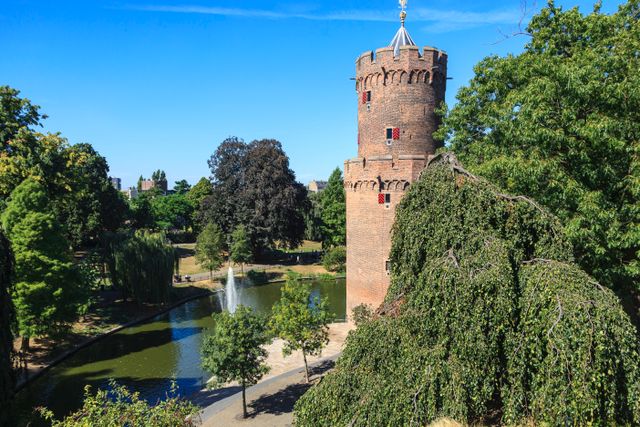
2. De Vereeniging
Concert hall De Vereeniging, built in 1914-15, is a protected national monument. It was built based on a design by Nijmegen architect Oscar Leeuw, in cooperation with his elder brother Henri Leeuw jr., in a rationalist style. Between 2014-2020, a lot of renovations took place, with both the large and the small auditoriums receiving a thorough overhaul.
3. Spoorwegviaduct
You may have walked under the railway viaduct on Lange Hezelstraat, also known as the Hezelpoort. Built between 1876-79, the railway viaduct is of cultural-historical value and architectural-historical importance. It’s a typical example of a railway viaduct from the last quarter of the nineteenth century.
4. Sint Stevenskerk
The Sint Stevenskerk dates from the second half of the 13th century. The history of this national monument goes back a long time. It was destroyed in 1944 and rebuilt in 1950-52. From the Grote Markt, you’ll have a beautiful view of the Sint Stevenskerk.
Read more about the history of the Sint Stevenskerk
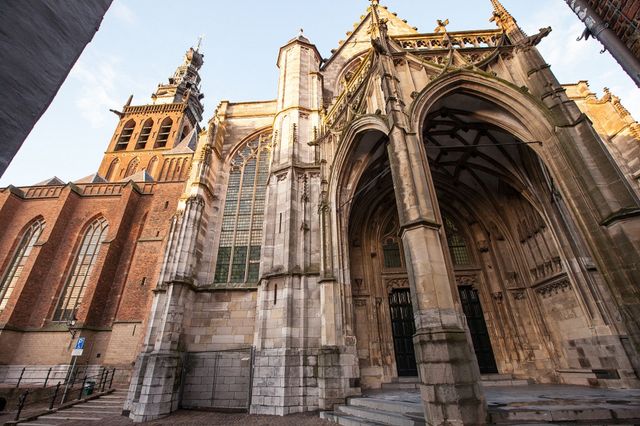
5. Mariënburgkapel
The Mariënburgkapel was built in the 15th century as a double church and was part of the Mons Mariae convent. The chapel wasn’t always a church: when Prince Maurits took Nijmegen in 1591, he forbade the Catholic faith, after which the chapel served as a barracks and military hospital. Afterwards, the chapel was used for multiple different purposes; these days, the Mariënburgkapel is the House of Nijmegen’s History: the starting point for anyone who wants to know more about the history of Nijmegen. They organise expositions and lectures, and there’s always someone present who can answer any questions you have.
6. Commandery of St. Jan
The history of the Commandery of St. Jan is extensive: it’s one of the oldest buildings in Nijmegen! In 1196, Earl Alardus and his wife Uda had it built to be a pilgrims’ house. In 1214, the building was allocated to the Order of the St. Jan, a military monastic order, after which they founded a monastery and a pilgrims’ house. The Commandery was hit during the bombardment of Nijmegen in February 1944. It was restored but eventually became a ruin because of looting. In the 1970s, the city reconstructed the building. Currently, it houses De Hemel.

7. Former Roman Catholic Orphanage
These days Kroonstraat 150 houses the Common Administration Office, but it used to be the Roman Catholic Orphanage. Can you spot the statues of orphans from the middle of the 17th century? The fact that you can still find so much of Nijmegen’s history in the city itself is remarkable.
8. The Witte Molen
The Witte Molen (white windmill), also known as the Looimolen (Loo mill), is the oldest of the two still-existing windmills in Nijmegen, and the only one that’s still functional. Built in 1760, the Witte Molen can be found on the Looimolenweg. Nowadays, the Witte Molen supplies bakers with 160,000 kilos of organic grains a year. The mill also has a shop, selling various organic grains, flours, flakes, and animal feed. Hans Titulaer, one of the millers, would be happy to tell you more about the Witte Molen.

9. St. Jacobskapel
The St. Jacobskapel is a national monument, found in Nijmegen’s Old Town. It’s a historic monument, built in the fifteenth century as part of the St. Jacobsgasthuis. The chapel is a remnant of a monastic complex, and has served as a glassblowing company, a cowshed, and a residence. Engineer J.G. Deur restored the chapel in 1965, and it’s been managed by the St. Jacobskapel Foundation since 1998. The St. Jacobskapel hosts weddings, celebrations, pilgrimages, concerts, and exhibitions. It can also be rented for meetings or rehearsals.
10. The Boterwaag
You can’t miss it: the Boterwaag on the Grote Markt. Built in 1612 in renaissance style, it’s the eyecatcher of the Grote Markt, where it used to serve as a weighing house. The ground floor used to be a meat market, and carts and carriages could enter through the building’s large gates. Until 1885, the city’s Main Guard operated on the top floor of the Boterwaag. Nowadays, you can’t drive in with your wagon or cart, but you can enjoy a nice cup of coffee in a cosy café/restaurant located here: de Waagh.
